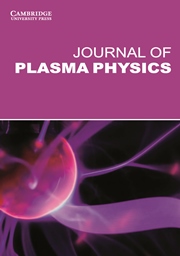No CrossRef data available.
Article contents
Breeder blanket and tritium fuel cycle feasibility of the Infinity Two Fusion Pilot Plant
Published online by Cambridge University Press: 24 March 2025
Abstract
The selection, design, and optimization of a suitable blanket configuration for an advanced high-field stellarator concept is seen as a key feasibility issue and has been incorporated as a vital and necessary part of the Infinity Two Fusion Pilot Plant (FPP) physics basis. The focus of this work was to identify a baseline blanket which can be rapidly deployed for Infinity Two while also maintaining flexibility and opportunities for higher performing concepts later in development. Results from this analysis indicate that gas-cooled solid breeder designs such as the Helium Cooled Pebble Bed (HCPB) are the most promising concepts, primarily motivated by the neutronics performance at applicable blanket build depths, and the relatively mature technology basis. The lithium lead (PbLi) family of concepts, particularly the Dual Cooled Lithium Lead (DCLL), offer a compelling alternative to solid blanket concepts as they have synergistic developmental pathways while simultaneously mitigating much of the technical risk of those designs. Homogenized 3-dimensional neutronics analysis of the Infinity Two configuration indicates that the HCPB achieves an adequate tritium breeding ratio (TBR) (1.30 which enables sufficient margin at low engineering fidelity), and near appropriate shielding of the magnets (average fast fluence of 1.3 x 1018 n/cm2 per fullpower year). The thermal analysis indicates that reasonably high thermal efficiencies (greater than 30%) are readily achievable with the HCPB paired with a simple Rankine cycle using reheat. Finally, the tritium fuel cycle analysis for Infinity Two shows viability, with anticipated operational inventories of less than one kilogram (approximately 675 grams) and a required TBR (TBRreq) of less than 1.05 to maintain fuel self-sufficiency (approximately 1.023 for a driver blanket with no inventory doubling). Although further optimization and engineering design is still required, at the physics basis stage all initial targets have been met for the Infinity Two configuration.
- Type
- Research Article
- Information
- Creative Commons
- This is an Open Access article, distributed under the terms of the Creative Commons Attribution licence (http://creativecommons.org/licenses/by/4.0/), which permits unrestricted re-use, distribution and reproduction, provided the original article is properly cited.
- Copyright
- © The Author(s), 2025. Published by Cambridge University Press


